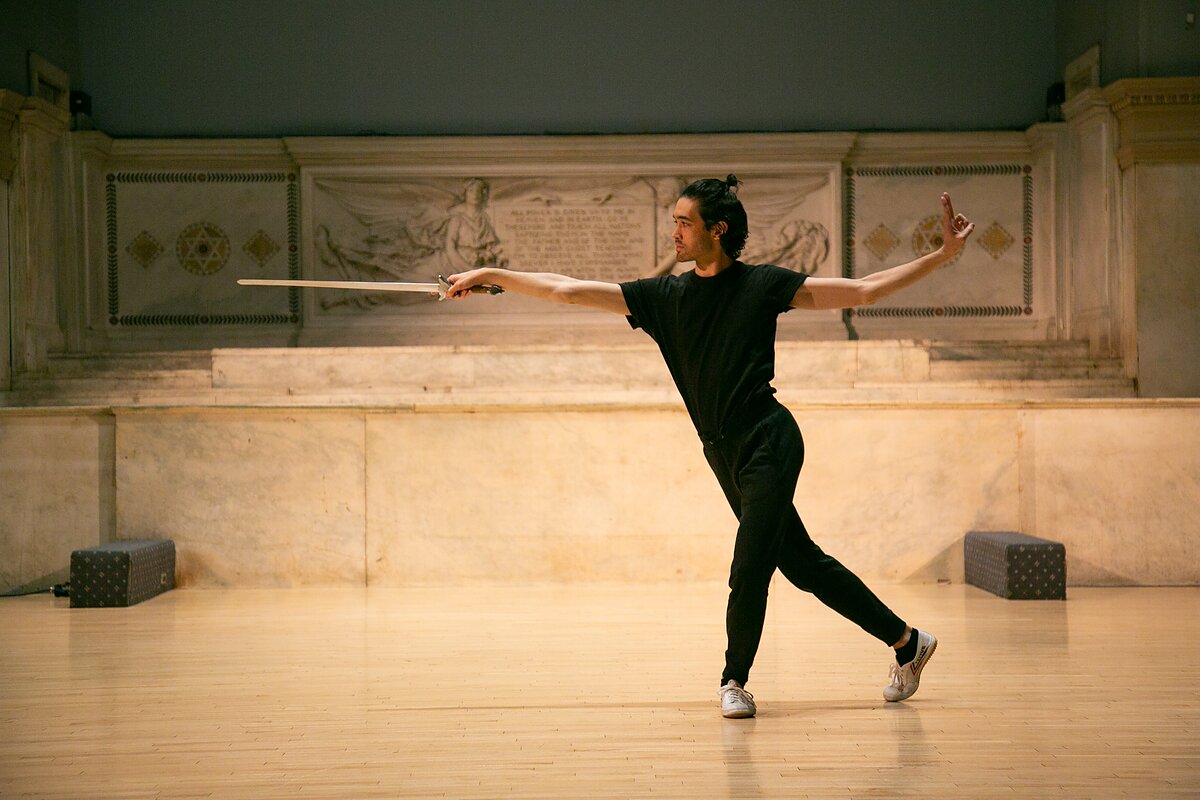Benjamin Akio Kimitch Battles Cultural Assumptions Through Dance
In the weeks following my conversation with choreographer Benjamin Akio Kimitch, I find myself returning to something he articulated. “I wanted people to see cloudwalks the way I see them,” he said of his dance “Tiger Hands.” “I believe the choreography worked because the audience didn’t think ‘geisha,’ didn’t think ‘little Chinese sparrow princess’ or ‘bound feet’…things that are a distraction from the beauty of cloudwalks.”
Kimitch is keenly aware of how an audience can be so blinded by their own biases that they aren’t able to see what he sees; a sentiment that’s familiar to minoritized audiences and artists everywhere. But Ben’s desire also encapsulates a universal artistic goal–to bring an audience into his point of view, to show them the beauty they’ve overlooked.
Kimitch has been a part of the New York City dance scene for over a decade. He’s worked at most of the notable dance institutions in the city including New York Live Arts and Danspace Project, winding his way from assistant to curator to producer. Alongside his ongoing choreographic practice, he’s also freelanced as a dancer and written for a variety of dance publications and is very much a product of a dance ecosystem that is run by the artists it serves.
Kimitch’s own description of himself as an “emerging choreographer” glosses over his extensive skill set. When it comes to Kimitch’s artistic practice, he’s never just making choreography. The projects he creates are holistic and carefully constructed. He does his own fundraising and marketing, he consults with researchers, and creates a community around his dance making. These years of work laid the groundwork for Kimitch’s most recent performance, which premiered in August 2022. He was selected for Open Call, The Shed’s commissioning program to support early-career artists. Over the course of multiple residencies, Kimitch developed a piece called “Tiger Hands,” a measured and intricate study of experimental dance and Peking Opera.
I had the opportunity to see “Tiger Hands” at one of its sold out showings in The Shed’s Griffin Theater. The audience’s first encounter with the performance is a relentless Peking Opera score. The music continues as people take their seats and settle. When the score finally stops, a blazing neon sun illuminates the towering white curtains surrounding the stage. What ensues is a 40-minute escape into the universe of experimental Chinese dance. It bubbles like a quiet rebellion: never brash or hostile, but insistently disobedient. Kimitch sets his audience up to expect a by-the-book theatrical experience, then serves something slightly off-kilter. In the disorientation, the audience is forced to reckon with their assumptions anew.
When waging war on cultural assumptions, subtlety is Kimitch’s weapon of choice. In one moment of the show, performer Pareena Lim presses a sword against her neck and cheek, then slowly begins to rotate around the point of contact. She maintains her posture while breaking out of the prescribed form, creating a moment of acute, engrossing tension. Lai-Yi Ohlsen starts the show with a solo where it is impossible to distinguish between improvisation and set choreography. It’s like watching a malfunctioning machine, a blend of movement in quick succession that swings between legible Peking opera and sinuous, free-flowing dance.
Kimitchs’s work is all about details. The minutiae are not small to him–in the context of Peking Opera, he is making massive aesthetic shifts. For instance, the carpeting used in “Tiger Hands” is the same color as the rehearsal carpeting used in Chinese dance training schools. There’s poetry in this choice: it allows us to see cultural heritage as something taught, learned, and practiced over time. Racial identity, like dance training, is never one and done. It’s built through instruction, relationships, mentorship, and community. As much as “Tiger Hands” commits to a polished finish, it still admits to being a work in progress.
This nuanced thinking about racial identity can be hard for presenting organizations to swallow. Kimitch often describes his work as “too traditional for experimental venues, and too experimental for traditional venues.” But for me, and for many Asian American audience members, the complexity of a work like “Tiger Hands” speaks to the unwieldiness of the Asian American experience. In his production, the word “alien” takes on a double meaning: there is the Orientalized foreign body, as well as a nod to the cosmos. You can imagine the dancers in “Tiger Hands” as Peking Opera performers, or as astronauts, carefully placing each foot on the gray surface of an unknown planet. Floating in a vacuum, searching for signs of life–these are just as relevant to Asian America as the spears and silk seen on stage.
When I ask Kimitch about his next dream project, he laughs a little, then says “I’ve always wanted to make just a ballet, like a nice dance to some Prokofiev or something.” He quickly follows up with a few additional concepts involving other Asian diasporic forms, but it’s clear that he’s named a real longing. What would it be like to make art without worrying about what it means? How would it feel to have the freedom to indulge in your own aesthetic impulses and be celebrated for those alone?
Noa Rui-Piin Weiss is a dancer, writer, and arts administrator based in New York City. His writing has been published by The Brooklyn Rail, Culturebot, Curationist, and Gibney Imagining Journal. Noa’s most recent performance collaborations include works by Alexa West, Hope Mohr/Maxe Crandall, Emily Coates, Mia Martelli, Miranda Brown, and Adrienne Truscott.




